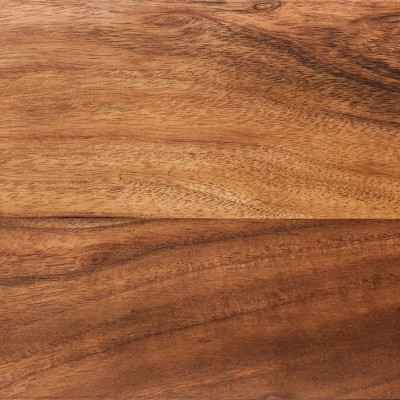
For furniture and interior design, walnut wood is very popular. It is an environmentally friendly alternative to tropical wood and is considered the most valuable native wood.
Although walnut wood is very noble, it is rarely cultivated specifically for timber production and processing. The wood that is used to make furniture usually comes from plantations where the trees are cultivated to produce the nuts and are felled and replaced at regular intervals. The trees grow shrubby and not very tall.
Only the wood of the so-called genuine walnut is called walnut wood. Other nut trees are listed under the generic name walnut wood. True walnut is found in southern, central and western Europe, as well as in central and eastern Asia, and is cultivated mainly in France and California.
optics
Walnut wood appears in different shades of color, the colorings range from a light gray over various dark browns to a dark brown. On the surface of the wood, the pores are visible, the individual fibers run irregularly through the wood. The grain of walnut wood is strong and lively, the pattern appears cloudy or in stripes. If walnut wood is cut obliquely, tongue-shaped structures are formed.
properties
The walnut is one of the heaviest indigenous woods, it is firm and robust. Therefore, it is also very stable in shape and scarcely buckles over time. Because the fibers in the wood run irregularly, walnut wood tends to crack quickly and can not be split evenly. Walnut is less suitable for outdoor use, Although it is hardly affected by insects and fungi, it is not considered to be weather-resistant. In simultaneous contact with iron and moisture can cause blue or black discoloration of the wood. Walnut wood, however, can be processed very well, with machines or by hand, it is easy to saw, peel and turn. The surface can also be easily polished, matted and stained.
use
In the interior, the wood is used for the production of furniture and veneers. As wood for exclusive furniture, it is an environmentally friendly alternative to tropical wood. The veneers are made of the most valuable wood of the root, these so-called root veneers are used in the interior fittings for furniture, flooring, doors and for ceiling and wall coverings. Because the wood of the walnut is easy to process, inlays, toys and decorative items are made from this wood. High-quality vehicles are often refined with elements made of walnut wood.
Advantages:
- can be easily processed and edited
- hardly disappears
- good environmental balance, because it is native
- represents a substitute for tropical wood
- Dyeing and texture in the grain are very lively and individual
Disadvantage:
- rare and therefore usually expensive
- heavy wood
- not resistant to moisture and weather
- discoloration occurs in conjunction with iron
 savillefurniture Interior Design Ideas
savillefurniture Interior Design Ideas